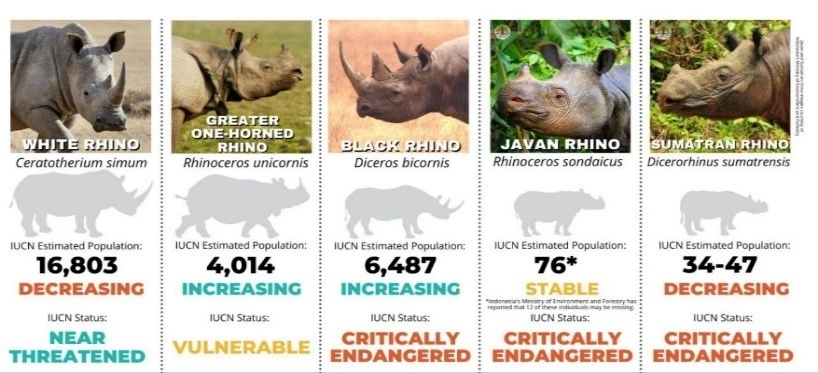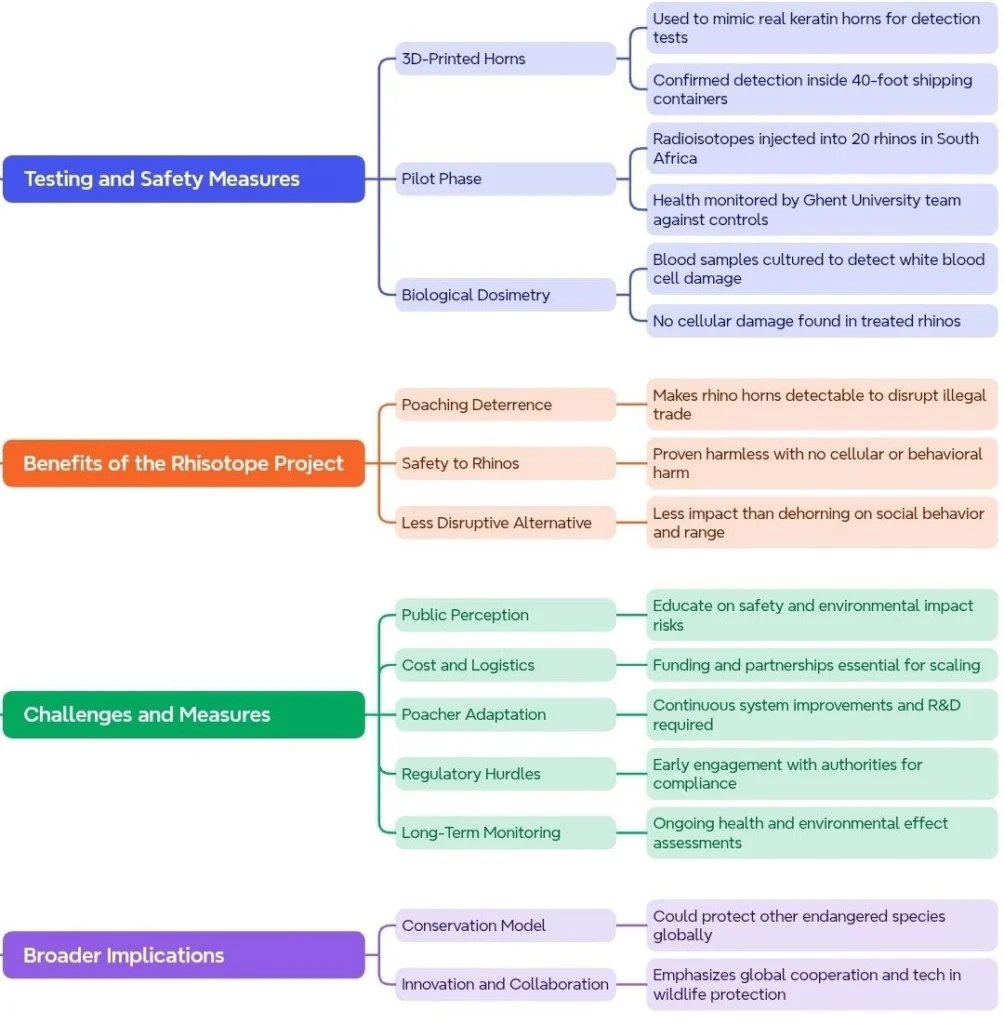Paper: GS – III, Subject: Environment and Ecology, Topic: Global Agreements and Efforts, Issue: Rhisotope Project.
Context:
The innovative Rhisotope Project, an initiative launched by a South African university to combat rhino poaching by injecting radioactive isotopes into rhino horns.
- The project aims to make trafficked horns easily detectable at international borders, ports, and airports, thereby deterring poachers and disrupting the illegal trade.
Key Takeaways:
The Rhino Poaching Crisis:
- South Africa, home to the world’s largest rhino population, has suffered significant losses due to poaching.
- Over the last decade, more than 10,000 rhinos have been killed for their horns, which are highly valued in Asian markets for traditional medicine and as a status symbol.
- The global rhino population has plummeted from an estimated 500,000 at the beginning of the 20th century to approximately 27,000 today, highlighting the urgent need for effective conservation strategies.
What is the Rhisotope Project?
- About: The Rhisotope Project commenced in 2021 and involves administering measured quantities of radioisotopes into the horns of live rhinos.
- Under the project “two tiny little radioactive chips” were inserted into the horn of a rhinoceros.
- The radioisotopes make the horn “useless” and “poisonous for human consumption.”
- The project’s final phase includes aftercare and follow-up blood samples to ensure the animals are protected, with the radioactive material lasting five years on the horn, proving more cost-effective than dehorning every 18 months.
- This project aims to use nuclear science in a novel way for conservation.
- This non-lethal yet powerful solution aims to radically reduce the demand from end-users and save rhinos from the very real threat of extinction.

How Isotope Tagging Works:
- Radioactive isotopes, or radioisotopes, are unstable forms of elements that emit radiation as they transform into a more stable state.
- This radiation can be traced, making it possible to detect the presence of the isotope.
- In the Rhisotope Project, the isotopes are used as markers to identify rhino horns that have been illegally obtained.
Rhisotope Project: Testing, Safety, and Impact:

Conclusion:
- The Rhisotope Project represents a bold and innovative approach to curbing rhino poaching. By combining scientific expertise, technological innovation, and international collaboration, the project offers a promising solution to a critical conservation challenge.
- While challenges remain, the potential benefits of the Rhisotope Project make it a worthwhile investment in the future of rhinos and other endangered species.
La Excellence IAS Academy, the best IAS coaching in Hyderabad, known for delivering quality content and conceptual clarity for UPSC 2025 preparation.
FOLLOW US ON:
◉ YouTube : https://www.youtube.com/@CivilsPrepTeam
◉ Facebook: https://www.facebook.com/LaExcellenceIAS
◉ Instagram: https://www.instagram.com/laexcellenceiasacademy/
GET IN TOUCH:
Contact us at info@laex.in, https://laex.in/contact-us/
or Call us @ +91 9052 29 2929, +91 9052 99 2929, +91 9154 24 2140
OUR BRANCHES:
Head Office: H No: 1-10-225A, Beside AEVA Fertility Center, Ashok Nagar Extension, VV Giri Nagar, Ashok Nagar, Hyderabad, 500020
Madhapur: Flat no: 301, survey no 58-60, Guttala begumpet Madhapur metro pillar: 1524, Rangareddy Hyderabad, Telangana 500081
Bangalore: Plot No: 99, 2nd floor, 80 Feet Road, Beside Poorvika Mobiles, Chandra Layout, Attiguppe, Near Vijaya Nagara, Bengaluru, 560040

